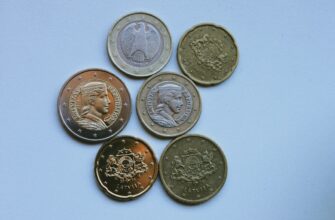## Introduction: Why Bitcoin Safety Matters
Buying Bitcoin represents financial sovereignty, but it also comes with risks. With over $1 billion in cryptocurrency stolen annually through scams and hacks, learning how to safely buy Bitcoin isn’t optional—it’s essential. This guide walks you through every security layer, from choosing platforms to storage solutions, ensuring your first Bitcoin purchase remains secure.
## Choose a Reputable Exchange Platform
Your exchange is the gateway to Bitcoin ownership. Prioritize these factors:
– **Regulatory Compliance**: Select platforms registered with FINRA, FCA, or equivalent bodies in your region
– **Security History**: Research past breaches using sites like CryptoCompare
– **Liquidity & Volume**: Higher volume exchanges (Coinbase, Kraken, Binance) offer better price stability
– **User Reviews**: Check Trustpilot and Reddit for authentic user experiences
– **Insurance Coverage**: Opt for exchanges that insure digital assets (e.g., Coinbase covers 100% of digital losses)
## Set Up a Secure Bitcoin Wallet
Never store Bitcoin long-term on exchanges. Wallet types include:
1. **Hardware Wallets (Cold Storage)**:
– Ledger Nano X ($149)
– Trezor Model T ($219)
– Pros: Offline security, PIN protection
– Cons: Upfront cost
2. **Software Wallets (Hot Wallets)**:
– Exodus (desktop/mobile)
– Electrum (desktop only)
– Pros: Free, user-friendly
– Cons: Online vulnerability
*Always download wallets from official sources only—avoid third-party app stores.*
## Complete Identity Verification (KYC)
Know Your Customer (KYC) protocols protect you and the platform:
– Prepare government-issued ID, proof of address, and selfie verification
– Expect 24-48 hour processing for Tier 2 verification (higher limits)
– Never share verification documents via email—use encrypted exchange portals only
## Secure Accounts & Payment Methods
### Account Protection Essentials
– Enable **two-factor authentication (2FA)** using Authenticator apps (Google/Microsoft Authenticator)
– Create 12+ character passwords with symbols, numbers, uppercase/lowercase
– Whitelist withdrawal addresses to prevent unauthorized transfers
### Safest Payment Options
| Method | Security Level | Processing Time |
|————–|—————-|—————–|
| Bank Transfer | ★★★★★ | 1-3 days |
| Debit Card | ★★★★☆ | Instant |
| PayPal | ★★★☆☆ | Instant |
*Avoid peer-to-peer (P2P) trades until you gain experience.*
## Execute Your Bitcoin Purchase
Follow this sequence for secure buying:
1. Deposit fiat currency to your exchange account
2. Place a **limit order** (not market order) for price control
3. Confirm transaction details before finalizing
4. Wait for 1 blockchain confirmation (~10 minutes) before transferring
## Transfer Bitcoin to Your Wallet
Withdrawals require precision:
– Copy/paste your wallet address (double-check first/last 4 characters)
– Start with a small test transfer ($10 worth)
– Never send Bitcoin to Ethereum addresses—crypto isn’t reversible
– Enable email/SMS confirmation for withdrawals
## Post-Purchase Security Practices
– **Regular Updates**: Update wallet software monthly
– **Phishing Defense**: Bookmark exchange URLs—never click email links
– **Backup Strategy**: Store hardware wallet recovery phrases on steel plates in fireproof safes
– **Privacy Measures**: Use dedicated email for crypto accounts
## Frequently Asked Questions (FAQ)
### Is buying Bitcoin anonymous?
No. Regulated exchanges require ID verification. For enhanced privacy, use decentralized exchanges (DEXs) after mastering basics.
### Can I reverse a Bitcoin transaction?
Impossible. Blockchain transactions are irreversible. Always verify addresses before sending.
### How much should beginners invest?
Start with $50-$100. Never invest emergency funds or money you can’t afford to lose.
### Are hardware wallets worth the cost?
Absolutely. For holdings over $200, a $150 hardware wallet provides bank-grade security.
### What’s the biggest security mistake?
Storing Bitcoin on exchanges long-term. 97% of 2022’s $3.8B crypto losses involved exchange hacks (Chainalysis Report).
## Final Security Checklist
Before buying Bitcoin, verify you’ve:
☑️ Chosen a regulated exchange
☑️ Installed 2FA on all accounts
☑️ Set up a private wallet (not exchange-based)
☑️ Secured recovery phrases offline
☑️ Started with a small test purchase
By methodically implementing these 7 security layers, you transform Bitcoin ownership from a vulnerability to a fortified asset. Remember: In cryptocurrency, you are your own bank—security begins with disciplined habits.







